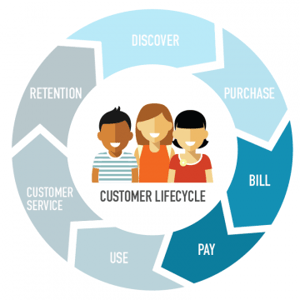Quality of the service is important to the overall customer care experience, however, the monetary exchange for the services provided by the CSP is an integral component of the customer lifecycle. At a basic level, this is where the majority of the revenue is derived by the operator. In certain markets, broadband is metered, capacity is throttled, and policy is enforced, creating new opportunities for additional revenue by leveraging modules such as pay-as-you-go, pay-per-use, and burst-peak window models where customers pay for better quality services during peak usage times in their region.
Controlling capacity may be the primary objective for many operators, however, to ensure a flawless user experience, accuracy of the bill is paramount. This goes beyond preventing issues such as overbilling with associated fines, refunds and reversing revenue recognition. Bill accuracy touches both the customer and the operator. What happens if usage is not aggregated across multiple access points, such as fixed point and community WiFi? Or worse yet, what happens when the customer is overbilled? These scenarios impact the reputation and the overall customer care experience while the issue is being resolved, and even after it is resolved. Social currency is real, and a single event will ultimately affect the Discover phase for new customers.
How can today’s operator ensure both an accurate bill and a high quality service experience to avoid damaging their reputation and potentially risk subscriber churn?

Building Accurate Accounting
Overbilling, which is usually relevant to usage based services, is rarely isolated and shows a systemic problem within an operator’s data collection and analytics platform. Collecting information at the subscriber edge often results in under-reporting while collecting at the headend is also not perfect. RADIUS, Diameter, and Internet Protocol Detail Record (IPDR) are some of the standard protocols for recording and reconciling consumptions records, however, it is not uncommon for erroneous usage counters to appear in the record stream. IPDR, a lightweight protocol designed for producing IP data records, for example, is typically configured on headend equipment to generate records every 15 minutes, containing information on each unique device serviced by the routing element. This is one of the better mechanisms for aligning with policy enforcement but it is still important to determine if samples need to be normalized or rejected during an anomaly detection process. Errors in usage counters can be caused by many reasons, such as power cycling of a routing element, firmware bugs, corrupted or delayed records, or wrapping of cumulative counters, to name a few.
The reality is that overbilling includes scenarios where customers are charged more than they should be, and it also includes unexpected charges. It is not uncommon to hear customer horror stories about a massive and unexpected phone bill due to excess roaming charges generated during a vacation. This isn’t limited to only to a cell phone, either. Many wired/wireline operators have data caps, some even ‘promote’ the subscriber to the next service tier for the remainder of the month, or reconcile the usage with overage fees at the end of the month. These unexpected charges are very troubling for the subscriber, and communication and transparency is your key to avoiding surprises. There are a few vital questions that you should be prepared to answer in order to avoid upsetting your subscribers with bill shock:
- How do you communicate with your subscribers when their current levels exceed their SLA, and the bill at the end of the month is going to be higher than normal?
- Is this something that the customer can be proactive about, such as blocking usage beyond a certain amount?
- Perhaps most importantly, is the customer aware of their options and how they can change their subscription?
Answering these questions starts with deploying an analytics platform that accurately monitors subscriber usage and automatically notifies subscribers when they are close to exceeding their service thresholds. In addition, operators must provide the subscriber with a self-care portal that clearly explains what options are available to them.
By ensuring communication and transparency with your subscribers, you can avoid the adverse reactions that often arise due to excess usage of services or high roaming costs.
Alternative Service Models
One of the main aspects driving business transformation projects within Service Provider organizations is service agility. Service agility means creating and deploying new service models that maximize the revenue potential from your subscriber base, while also delivering the services that will meet your customers’ unique needs. Consumption and related billing accuracy are essential to successfully realizing this goal.
When we think about the traditional gold, silver, bronze (or variants thereof) service plans available from local broadband providers, they are often rated based on upload and download speed with a monthly cap, with a few different profiles, and the optional unlimited monthly packages. With accurate accounting, operators have the ability to create unique custom options tailored to actual usage patterns. Imagine a service tier with relatively low bandwidth during the day for all the IoT devices in a home with burst capacity during the hours of 9–11pm, or an online cloud backup service that occurs automatically during the night time and doesn’t eat into Internet quota. How much would subscribers appreciate packages uniquely tailored to their needs, such as an a la carte broadband?
Policy enforcement and accurate usage tracking enables alternative service models. It is also effective for determining growth and predicting infrastructure requirements based on the modelling and forecasting of subscriber usage patterns per region, routing element, or even per node. Extending the application of this edge intelligence brings us closer to assurance, taking us full circle to customer SLAs.
As operators look to launch alternative service models, they need to consider how subscription flexibility can be automated, or how empowering the subscriber can make purchasing a frictionless activity. In my next article, I will talk about the purchasing, messaging, services activation, and expand on service agility when covering the customer experience during the Purchasephase of the customer lifecycle. Stay tuned.



Submit a Comment